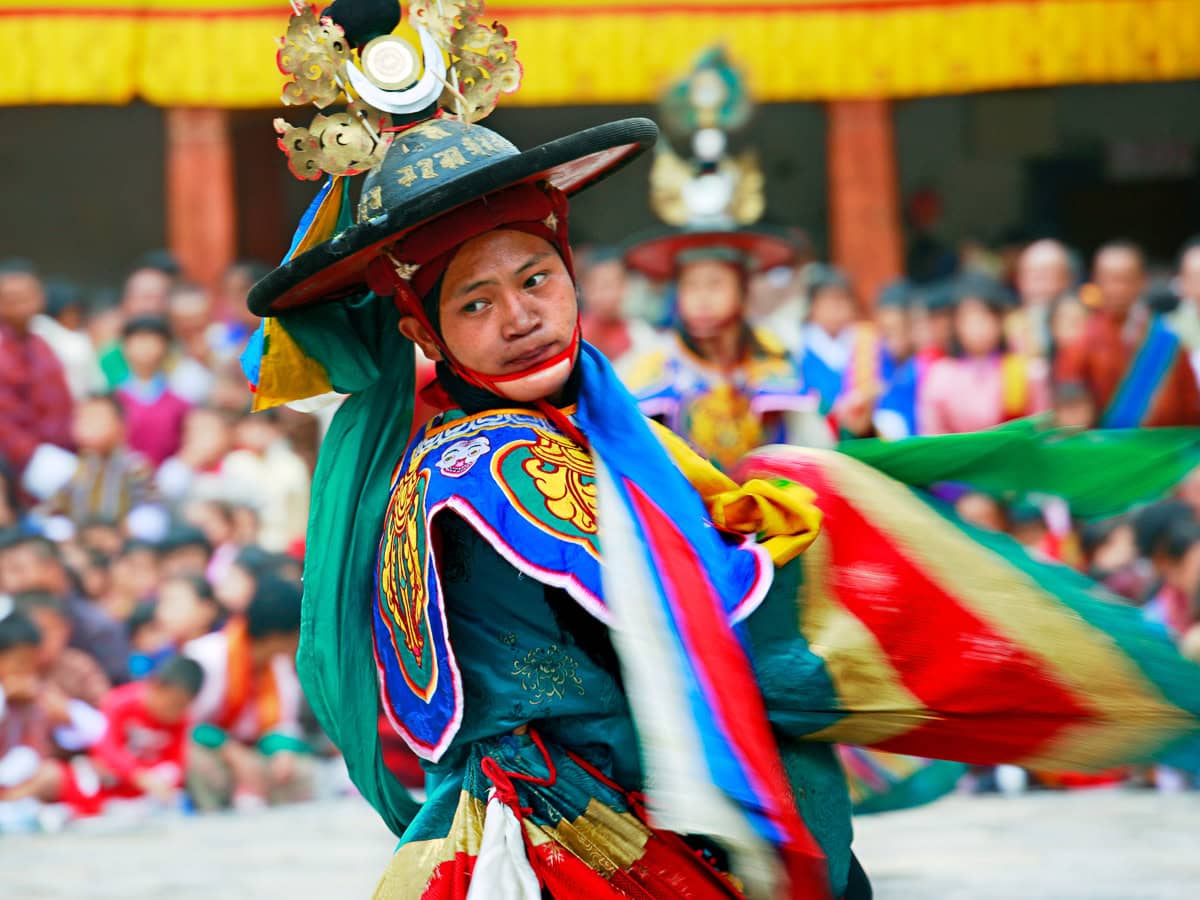
BHUTAN
A Beginner’s Guide to Bhutan’s Tshechu Festivals
What is a Tshechu Festival?
It is an extraordinary privilege to witness a traditional Tshechu festival in Bhutan. The festival celebrates events in the life of Padmasambhava, the 8th century master who brought Buddhism to Tibet and Bhutan. He is considered by members of the Nyingmapa sect of Tibetan Buddhism to be their founder. Such festivals are celebrated throughout Bhutan and last several days, attended by Bhutanese from all around the countryside, who leave their farms and dress in their finery to gather and celebrate with friends.


What to Expect at a Tshechu Festival in Bhutan?
Activities include sacred dance-dramas performed by monks or laymen wearing spectacular silk and brocade robes, and, for certain dances, masks representing animals or deities. The dances take place in beautiful monastery courtyards under the brilliant cobalt sky. Most tshechus have a ceremonial unfurling of the thongdrol, a sacred thangka (mural on cloth) with a portrait of Guru Rimpoche. Many of these giant thangkas cover the entire exterior wall outside the monastery and are only viewed on special occasions. It is believed that seeing this portrait can lead to enlightenment, and Buddhists believe their sins are washed away upon seeing a thongdrol.
When and Where are the Tshechu Festivals?
Tshechu means “day ten” and is typically held around the tenth day of the month of the Tibetan lunar calendar. This means that most festivals fall on slightly different dates each year when translated to the Gregorian calendar, but generally take place in the same time of year. Major towns (and some smaller villages) have their own festival once per year that ranges from one to three days. Each departure of our Hiker’s Journey to Bhutan visits one unique festival. Because tshechus take place in different towns, they will fall on different places in the itinerary, depending on the departure. Please note that you will not miss any of the regularly scheduled hikes or activities as described in the itinerary, but you will have busier days during the festival. Our Bhutan Private Journey may include a tshechu if preferred dates line up with the festival schedule.

late February or early March
Punakha Tshechu
This tshechu inside the Punakha Dzong features lively masked dances as well as folk songs sung by women. Just before the tshechu is the Punakha Drub, which celebrates Bhutan’s victory over the Tibetan invasion. Performers dressed in warrior fashion display their sword skills while riding horses, and monks perform their prayers. The daylong festival features processions from the Punakha Dzong and dances held outside the dzong.
late March
Paro Tshechu
Held in the spring in the courtyard of the Paro Dzong, when rhododendrons dot the hills, this festival is one of the most colorful in Bhutan, with festive mask dances performed by monks and the unrolling of a giant thongdrol.

late September or early October
Thimphu Tshechu
The largest and most important tshechu festival in the country is held in Tashi Dzong in Thimphu, the modern capital of Bhutan every fall. You’ll see the unfurling of the thongdrol and dances performed by monks and laymen in festival attire. It’s also a great time to see locals dressed in their fine traditional ghos (for men) and kiras (for women).
October or November
Prakhar Tshechu
The Prakhar Tshechu is performed in Prakhar Lhakhang. It is smaller compared to Paro and Thimphu festivals, but you’ll still see elaborate traditional dress, masked dances, and the giant thangka.

late October or November
Jakar Tshechu
The festival occurs at Jakar Dzong in the remote Bumthang Valley, with chants and dances performed by both monks and laymen. A special highlight of this tshechu includes the “black hat” dance performed by monks.
November 11
Black-Necked Crane Festival
Unlike a tshechu, the Black-Necked Crane Festival at the Gangtey Monastery in Phobjikha Valley is a special occasion for locals to celebrate this majestic migratory bird, which travels down from the Tibetan Plateau to winter in the hundreds in this remote valley. The festival is organized to raise awareness for conservation of this endangered species and features masked folk dances and songs.



